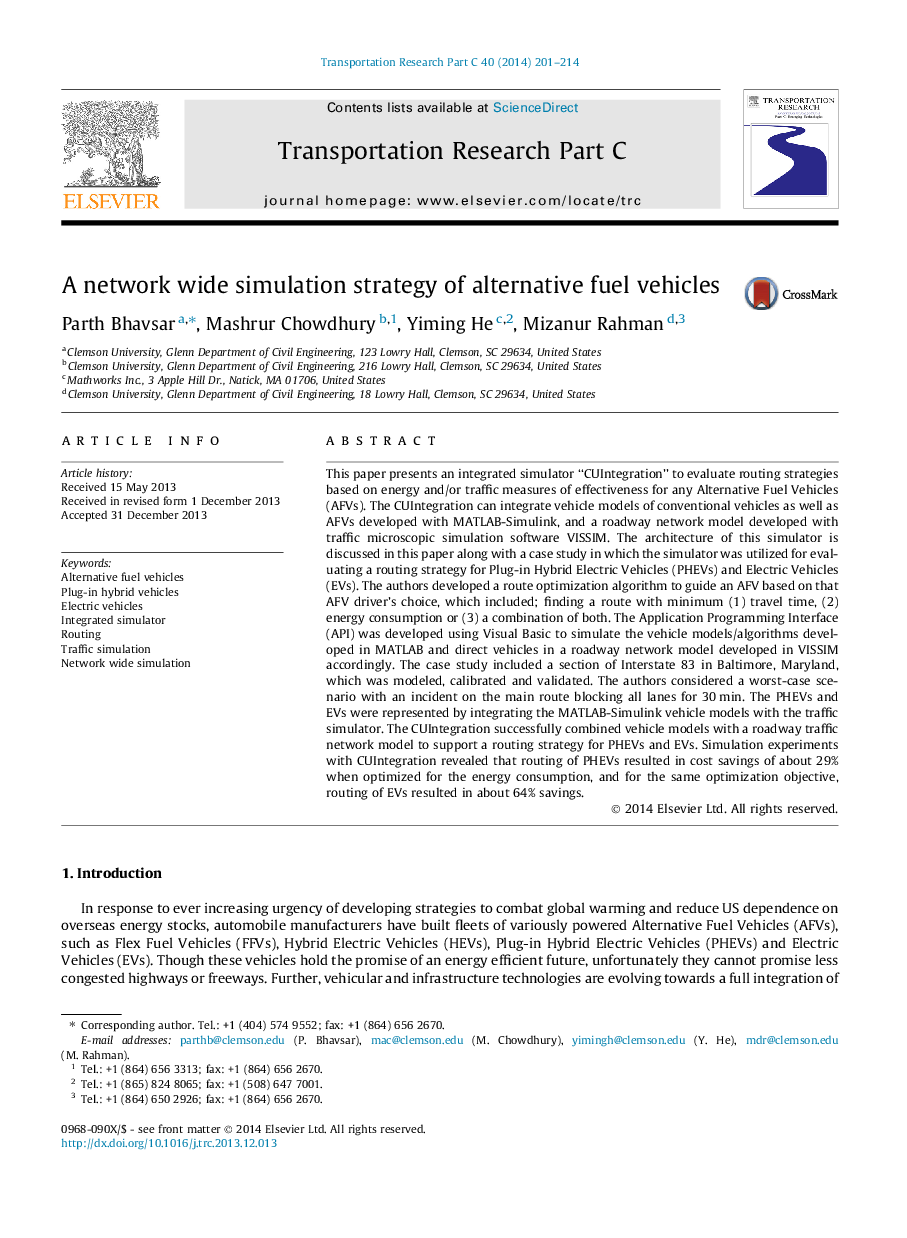| کد مقاله | کد نشریه | سال انتشار | مقاله انگلیسی | نسخه تمام متن |
|---|---|---|---|---|
| 525278 | 868904 | 2014 | 14 صفحه PDF | دانلود رایگان |
• Developed a roadway network simulation strategy of Alternative Fuel Vehicles (AFVs).
• Developed a CUIntegration, an integrated simulator.
• CUIntegration integrated Vehicle models of AFVs with a traffic simulator.
• CUIntegration was utilized to evaluate a routing strategy for PHEVs and EVs.
• CUIntegration can provide network and vehicle level impacts for any roadway network.
This paper presents an integrated simulator “CUIntegration” to evaluate routing strategies based on energy and/or traffic measures of effectiveness for any Alternative Fuel Vehicles (AFVs). The CUIntegration can integrate vehicle models of conventional vehicles as well as AFVs developed with MATLAB-Simulink, and a roadway network model developed with traffic microscopic simulation software VISSIM. The architecture of this simulator is discussed in this paper along with a case study in which the simulator was utilized for evaluating a routing strategy for Plug-in Hybrid Electric Vehicles (PHEVs) and Electric Vehicles (EVs). The authors developed a route optimization algorithm to guide an AFV based on that AFV driver’s choice, which included; finding a route with minimum (1) travel time, (2) energy consumption or (3) a combination of both. The Application Programming Interface (API) was developed using Visual Basic to simulate the vehicle models/algorithms developed in MATLAB and direct vehicles in a roadway network model developed in VISSIM accordingly. The case study included a section of Interstate 83 in Baltimore, Maryland, which was modeled, calibrated and validated. The authors considered a worst-case scenario with an incident on the main route blocking all lanes for 30 min. The PHEVs and EVs were represented by integrating the MATLAB-Simulink vehicle models with the traffic simulator. The CUIntegration successfully combined vehicle models with a roadway traffic network model to support a routing strategy for PHEVs and EVs. Simulation experiments with CUIntegration revealed that routing of PHEVs resulted in cost savings of about 29% when optimized for the energy consumption, and for the same optimization objective, routing of EVs resulted in about 64% savings.
Journal: Transportation Research Part C: Emerging Technologies - Volume 40, March 2014, Pages 201–214
